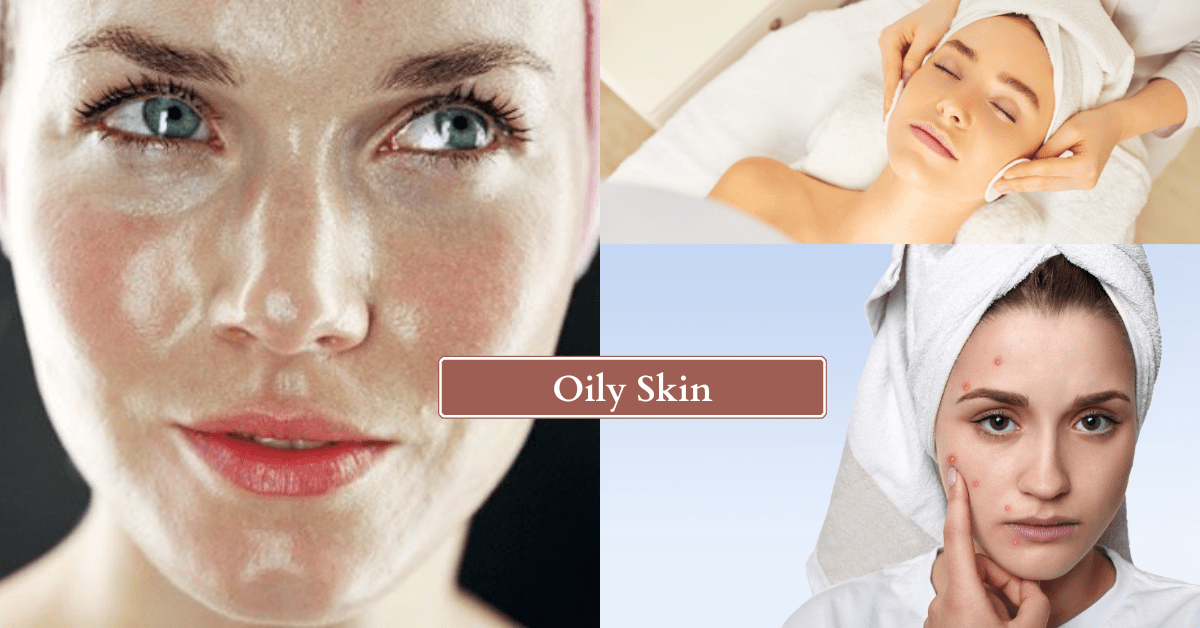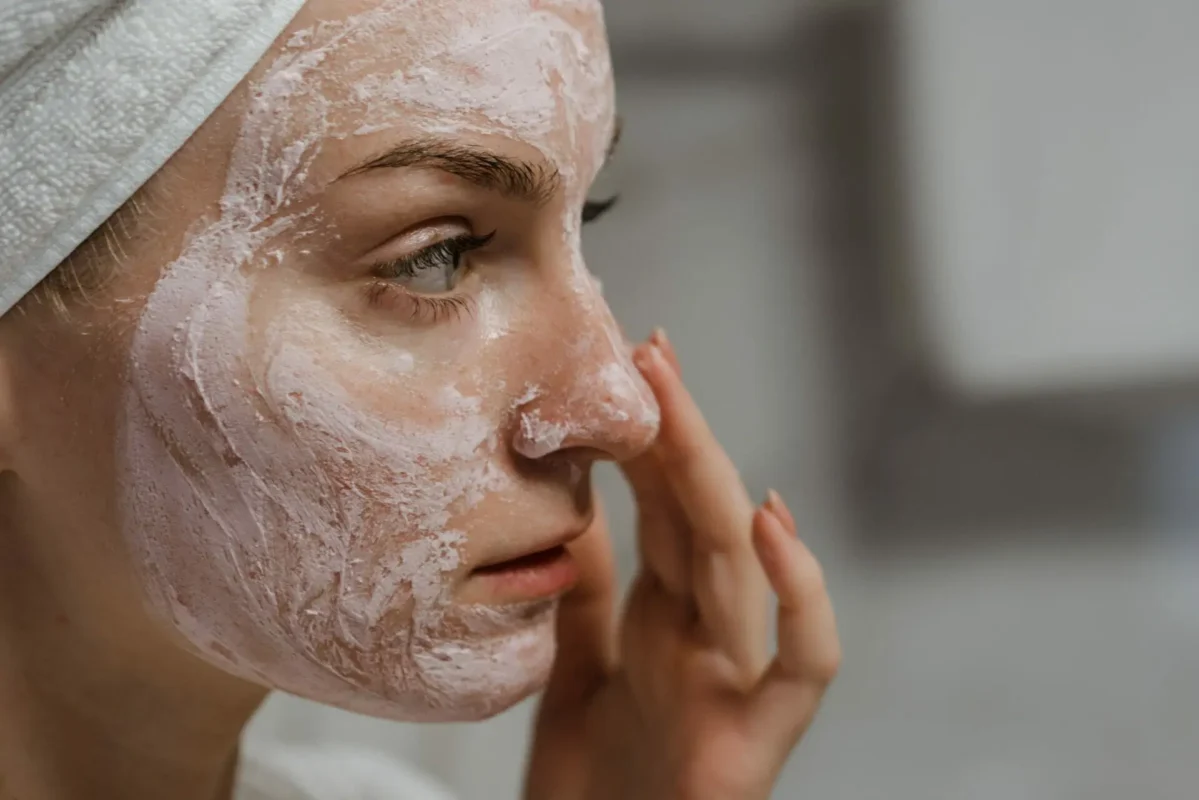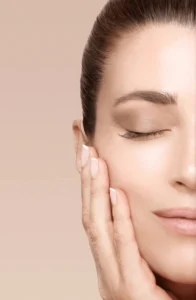Oily skin is one of the most common skin types, affecting millions of people worldwide. While sebum – the oil produced by our skin – is necessary for keeping the skin hydrated and protected, an overproduction of it can lead to problems such as shine, clogged pores, and acne. Managing oily skin can often feel like an endless battle with breakouts, excess shine, and even enlarged pores. However, with the right knowledge, skincare routine, and lifestyle adjustments, it’s entirely possible to control and balance oily skin.
This article will dive deep into the causes of oily skin, common skin concerns associated with it, and most importantly, practical, effective solutions to help you manage excess oil and keep your skin looking fresh, clear, and balanced.
What Causes Oily Skin?
To understand how to manage oily skin, it’s essential to first recognize its causes. The skin’s oil production is regulated by sebaceous glands, which are located in the dermis layer of the skin. These glands are stimulated by a variety of factors, and when they produce too much oil (sebum), it can cause an oily appearance and contribute to clogged pores.
Read More: Natural Home Remedies For Oily Skin

Common Causes of Oily Skin
- Genetics
Oily skin is often hereditary. If your parents or close relatives have oily skin, it’s more likely that you will too. Your genetic makeup influences how active your sebaceous glands are. - Hormonal Fluctuations
Hormonal changes can play a significant role in excess oil production. During puberty, pregnancy, menstruation, or conditions like polycystic ovary syndrome (PCOS), hormone levels fluctuate, leading to an increase in sebum production. This is why many people experience oily skin and breakouts during adolescence or pregnancy. - Diet
While diet does not directly cause oily skin, certain foods can exacerbate the problem. Diets high in refined carbohydrates (like white bread and sugary snacks), dairy, and unhealthy fats can promote oil production in the skin. On the other hand, consuming more fruits, vegetables, and healthy fats like those found in nuts and avocados can help keep oil levels balanced. - Over-cleansing or Harsh Products
Paradoxically, cleansing too often or using harsh products designed to strip oil can cause your skin to produce even more sebum. When the skin becomes too dry, it signals the sebaceous glands to compensate by producing additional oil. This cycle can create more oil and contribute to an unhealthy skin balance. - Weather and Climate
Hot, humid weather can increase oil production as your body tries to protect itself from the environment. On the other hand, cold, dry weather can strip moisture from your skin, leading to more oil production as your skin attempts to retain hydration. - Stress
High stress levels can lead to an increase in cortisol, the hormone responsible for stimulating oil production. Stress can also worsen skin conditions like acne, making oil control even more challenging.
Common Skin Concerns Associated with Oily Skin
- Acne and Breakouts: Excess oil can mix with dead skin cells and debris, clogging pores and creating the perfect environment for acne-causing bacteria to thrive.
- Shiny T-zone: The forehead, nose, and chin, also known as the T-zone, are more prone to oil production. The excess oil often results in a shiny appearance.
- Clogged Pores: When oil mixes with dirt and dead skin cells, it can block pores, leading to blackheads and whiteheads.
- Enlarged Pores: Overactive sebaceous glands can cause pores to expand, especially in the T-zone, contributing to the appearance of large, visible pores.
Effective Solutions for Managing Oily Skin
Managing oily skin requires a balanced skincare routine that cleanses, hydrates, and controls oil without over-drying or irritating the skin. Below are practical steps and solutions that can help balance your skin’s oil production while addressing the issues associated with oily skin.
1. Choose the Right Cleanser
Cleansing is the first step in any skincare routine, and for oily skin, it’s essential to use a gentle, oil-controlling cleanser. Avoid harsh soaps or cleansers that strip the skin of its natural oils, as this can trigger more oil production. Instead, opt for foaming, gel-based, or salicylic acid-based cleansers, which work well to remove excess oil and prevent breakouts without over-drying the skin.
Recommended Cleansers:
- CeraVe Foaming Facial Cleanser: A gentle yet effective cleanser that helps remove excess oil without disrupting the skin’s natural moisture balance.
- Neutrogena Oil-Free Acne Wash: Contains salicylic acid, a beta-hydroxy acid (BHA) that helps unclog pores and control oil production.
- La Roche-Posay Effaclar Purifying Foaming Gel: Designed specifically for oily and acne-prone skin, it helps reduce oil while maintaining the skin’s natural pH.

2. Incorporate Exfoliation Into Your Routine
Exfoliating regularly can help keep pores clear by removing dead skin cells that can mix with oil and clog pores. For oily skin, chemical exfoliants like salicylic acid or glycolic acid are more effective than physical scrubs, which can be too harsh and irritating.
- Salicylic Acid (Beta-Hydroxy Acid or BHA) penetrates the pores to exfoliate inside and reduce oil buildup.
- Glycolic Acid (Alpha-Hydroxy Acid or AHA) works on the surface to remove dead skin cells and brighten the complexion.
Recommended Exfoliants:
- The Ordinary Glycolic Acid 7% Toning Solution: A gentle exfoliating toner that helps improve skin texture and prevent clogged pores.
- Paula’s Choice Skin Perfecting 2% BHA Liquid Exfoliant: A cult-favorite exfoliant that penetrates deep into the pores to remove excess oil and dead skin.
- Murad AHA/BHA Exfoliating Cleanser: A dual-action cleanser with both chemical and physical exfoliants for oily skin.
Note: Exfoliate 2-3 times per week, and avoid over-exfoliating, as this can irritate the skin and trigger more oil production.
3. Use a Lightweight, Oil-Free Moisturizer
Many people with oily skin skip moisturizer altogether, fearing it will add to the oiliness. However, this can backfire. Moisturizing is essential to keep the skin hydrated and maintain a healthy skin barrier. Look for lightweight, oil-free moisturizers that provide hydration without clogging pores.
Recommended Moisturizers:
- Neutrogena Hydro Boost Water Gel: A lightweight, gel-based moisturizer that hydrates without leaving a greasy residue.
- CeraVe PM Facial Moisturizing Lotion: A non-comedogenic formula that is perfect for oily and acne-prone skin.
- Oil-Free Moisturizer by Clean & Clear: A non-oily option that offers hydration without contributing to excess oil production.
4. Incorporate a Mattifying Primer or Serum
If you struggle with excess shine throughout the day, a mattifying primer or serum can help control oil production. These products can create a smooth surface, blur imperfections, and absorb excess oil, helping to keep the skin matte and shine-free.
Recommended Mattifying Products:
- Smashbox Photo Finish Oil & Shine Control Primer: This mattifying primer controls oil and helps makeup last longer.
- The Ordinary Niacinamide 10% + Zinc 1%: Niacinamide helps regulate oil production, while zinc reduces inflammation and prevents breakouts
- .

5. Sun Protection
Wearing sunscreen every day is crucial, even for oily skin. Many people with oily skin avoid sunscreen, thinking it will make them greasy, but the opposite is true. Sunscreen is essential to protect the skin from harmful UV rays that can cause premature aging, pigmentation, and worsen skin issues. Opt for a lightweight, oil-free sunscreen with a matte finish.
Recommended Sunscreens:
- La Roche-Posay Anthelios Clear Skin Dry Touch Sunscreen SPF 60: A non-comedogenic sunscreen that provides oil control and is ideal for acne-prone skin.
- Neutrogena Clear Face Sunscreen SPF 55: This sunscreen is designed specifically for oily and acne-prone skin, offering protection without clogging pores.
6. Consider Retinoids
Retinoids, such as retinol or tretinoin, are a powerful option for oily skin. They help regulate oil production, unclog pores, and prevent acne. Retinoids also stimulate collagen production, reducing the appearance of pores over time.
Recommended Retinoids:
- Differin Gel (Adapalene 0.1%): A retinoid that’s available over the counter and helps with oil control and acne prevention.
- Retinol by The Ordinary: A gentle, affordable option that helps reduce oil and improve skin texture.
Note: Start with a lower concentration and gradually increase to avoid irritation.
7. Lifestyle Adjustments
In addition to skincare, certain lifestyle habits can help control oily skin:
- Eat a balanced diet: Reduce the intake of greasy, sugary, and processed foods. Incorporate more fruits, vegetables, and healthy fats into your diet.
- Stay hydrated: Drink plenty of water to keep your skin hydrated and help regulate oil production.
- Manage stress: Practice stress-relieving activities like yoga, meditation, or exercise to reduce cortisol levels, which can exacerbate oil production.
Conclusion
While oily skin can present some challenges, it is manageable with the right approach. The key to success lies in maintaining a balanced skincare routine, choosing the right products, and making lifestyle adjustments that promote healthy skin. With the tips and solutions provided in this article, you can control excess oil, reduce shine, and keep your skin clear, smooth, and healthy.
Consistency is key when it comes to skincare, so be patient and give your skin the time it needs to adjust. With the right care, your oily skin can become a well-balanced, radiant complexion.












